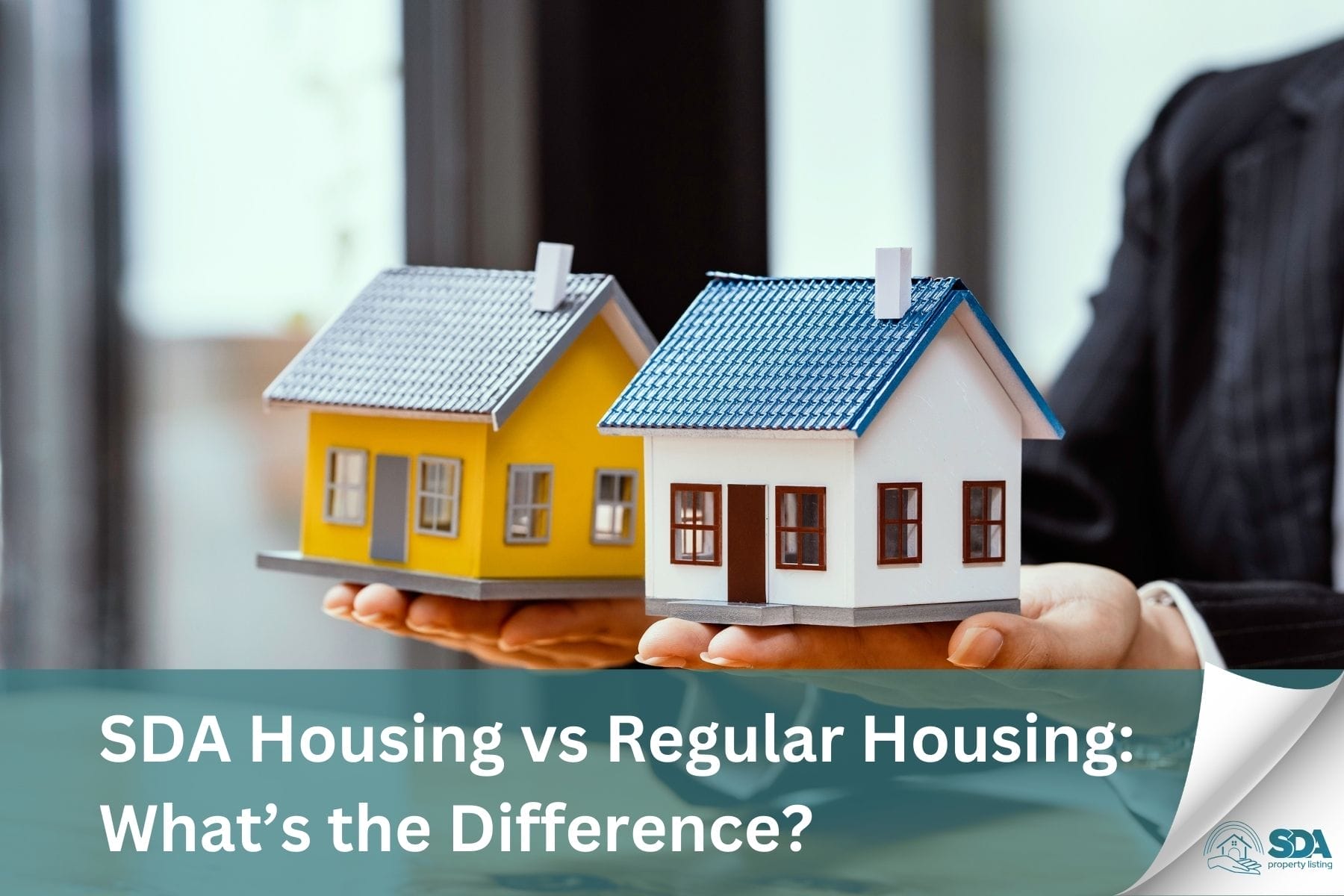
SDA Housing vs Regular Housing: What’s the Difference?
The right living environment can have a significant effect on a person’s life, especially for individuals with disabilities or high support needs. Therefore, it is important for buyers and NDIS participants to know about different types of housing available. Moreover, differentiating between Specialist Disability Accommodation (SDA) and regular housing helps a lot in understanding the support that should be provided to ensure independence and accessibility.
What is SDA Housing?
SDA housing is housing that is specifically designed to cater for the needs of individuals who have high support requirements or significant functional impairments under the NDIS. The main purpose of SDA housing is to enable individuals with specific physical, sensory or cognitive requirements to live independently as possible with the appropriate assistance.
SDA housing comes in diverse forms that may include shared homes as well as individual dwellings. They are usually characterized by accessible designs, assistive technology and structural changes that facilitate daily living for individuals with disabilities. What is more important about SDA housing is that it empowers residents to live in an environment that is safe and supportive as per their specific requirements.
Key Differences Between SDA Housing and Regular Housing
1. Accessibility and Design
Accessibility is the main point of concern for SDA properties as they have structural components like wider doorways, ramps, and reinforced walls for grab rails. These changes help in day-to-day activities which eventually leads to self-sufficiency of the residents. On the contrary, regular houses do not have such features hence expensive adjustments are necessary to make them accessible in a similar manner.
2. Support Services
Residents in SDA housing can access convenient services including on-site caregivers and assistive technology that help them handle basic daily tasks and medical attention in a hassle-free manner. Unlike SDA housing, regular housing lacks such kind of support, necessitating fragmented care plans that demand more coordination, time and effort from families.
3. Government Funding
Individuals who are NDIS-eligible participants can obtain funding to cover SDA housing costs. This financial assistance enables them to concentrate on other things like personal growth and development rather than worrying about costly daily life needs. Regular housing, however, is not covered under NDIS funding, leaving individuals to manage costs themselves, including any necessary modifications.
4. Safety and Independence
SDA homes come with safety and independence enhancements like emergency call systems and fall-prevention measures. Such modifications make it possible for them to be assured of help any time they require it. These advanced features are not typically found in normal houses, potentially reducing the resident’s safety and independence, making it more difficult for individuals to live independently without outside help.
5. Community Living Options
SDA properties offer both shared and individual living options. The shared living arrangements with others who have similar needs, gives them a feeling of community and provides support for their needs. The mental and emotional well-being of the residents can be enhanced by reducing loneliness, ensuring that they feel fully connected. On the other hand, residents living in regular housing may lack such networks and are sometimes far from vital facilities that they require during their daily life activities.
Why Choose SDA Housing Over Regular Housing?
1. Long-Term Cost Efficiency
Even though regular housing can seem less expensive at first, the cost of modifying a standard home to meet accessibility requirements may end up being high. SDA houses come with all necessary facilities already installed and do not require expensive modifications. Furthermore, NDIS funding can help cover certain expenses for eligible participants, making SDA homes more economically viable in the long run.
2. Tailored Living Experience
SDA housing is specifically designed to cater for individuals with disabilities. A well-fitted house in terms of assistive technology and customized layouts is something that cannot be found in an ordinary setting hence making SDA housing more appropriate. This fosters independence and enhances the overall living experience for individuals requiring high support.
3. Integrated Support System
While regular homes require families to coordinate care from outside sources, SDA housing incorporates support services within the setting itself. Availability of on-site caregivers and assistive technology ensures easy access to help whenever required. This ensures a seamless and comprehensive approach to daily care.
4. Improved Quality of Life
In addition to providing accessibility, SDA housing enhances mental and emotional aspects of its residents. Increased quality of life comes about when facilities that enhance independence are used together with a sense of community among its members. Regular housing does not have such support or security measures in place, making it difficult for individuals with disabilities to thrive.
Conclusion
For individuals with high support needs, SDA housing offers a well-rounded solution with a combination of accessible designs, embedded support, NDIS funding, and a community-oriented environment that is safe. On the other hand, regular housing may require significant adjustments and external support systems. Selecting SDA accommodation is ideal for those seeking independence and long-term well-being in a space tailored to their needs.
References








